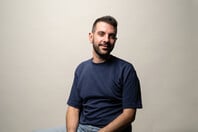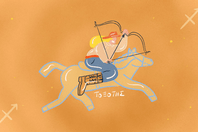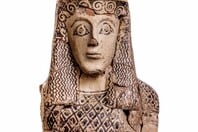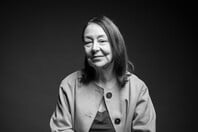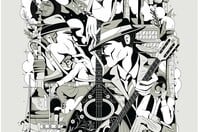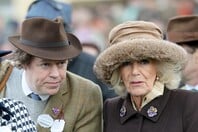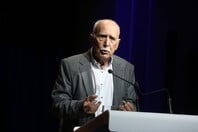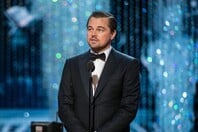Έχετε πρόβλημα στη στοιχειώδη κατανόηση κειμένων. Το οπαδιλίκι (γιατί περί αυτού πρόκειται) και η συγκινησιακά φόρτισμένη υπεράσπιση του ενός από τους δύο πόλους του λεγόμενου Ψυχρού Πολέμου, δε σε αφήνει να δεις πιο ψύχραιμα τι υποστηρίζει η Saunders σε ό,τι αφορά τον Αφηρημένο Εξπρεσιονισμό στις ΗΠΑ.Πουθενά δεν λέει ότι «ΟΛΑ [ήταν] ένα κυβερνητικό παραμύθι οργανωμένο από την CIA για να αποκρύψουν την ΠΑΤΑΓΩΔΗ αποτυχία του καπιταλισμού», ότι «οι τάχα "ατομικές ελευθερίες" στον Δυτικό κόσμο δεν ήταν πραγματικές, αλλά κυβερνητική προπαγάνδα». Τα πράγματα ήταν (και είναι) πολύ πιο σύνθετα από την αφελή καρικατούρα που μας παρουσιάζετe και τον μανιχαϊσμό που σας διακατέχει. Πρώτα απ' όλα, αυτά είναι γνωστά στην ίδια την Αμερική εδώ και πάνω από 20 χρόνια, και τα έχουν παραδεχθεί δημόσια ο ίδιοι πρωτεργάτες τους.«[...]The decision to include culture and art in the US Cold War arsenal was taken as soon as the CIA was founded in 1947. Dismayed at the appeal communism still had for many intellectuals and artists in the West, the new agency set up a division, the Propaganda Assets Inventory, which at its peak could influence more than 800 newspapers, magazines and public information organisations.[...]Until now there has been no first-hand evidence to prove that this connection was made, but for the first time a former case officer, Donald Jameson, has broken the silence. Yes, he says, the agency saw Abstract Expressionism as an opportunity, and yes, it ran with it.[...]The centrepiece of the CIA campaign became the Congress for Cultural Freedom, a vast jamboree of intellectuals, writers, historians, poets, and artists which was set up with CIA funds in 1950 and run by a CIA agent. It was the beach-head from which culture could be defended against the attacks of Moscow and its "fellow travellers" in the West. At its height, it had offices in 35 countries and published more than two dozen magazines, including Encounter.[...]The museum [MOMA] was also linked to the CIA by several other bridges. William Paley, the president of CBS broadcasting and a founding father of the CIA, sat on the members' board of the museum's International Programme. John Hay Whitney, who had served in the agency's wartime predecessor, the OSS, was its chairman. And Tom Braden, first chief of the CIA's International Organisations Division, was executive secretary of the museum in 1949.Now in his eighties, Mr Braden lives in Woodbridge, Virginia, in a house packed with Abstract Expressionist works and guarded by enormous Alsatians. He explained the purpose of the IOD."We wanted to unite all the people who were writers, who were musicians, who were artists, to demonstrate that the West and the United States was devoted to freedom of expression and to intellectual achievement, without any rigid barriers as to what you must write, and what you must say, and what you must do, and what you must paint, which was what was going on in the Soviet Union. I think it was the most important division that the agency had, and I think that it played an enormous role in the Cold War."He confirmed that his division had acted secretly because of the public hostility to the avant-garde: "It was very difficult to get Congress to go along with some of the things we wanted to do - send art abroad, send symphonies abroad, publish magazines abroad. That's one of the reasons it had to be done covertly. It had to be a secret. In order to encourage openness we had to be secret."»Όλο το άρθρο από τον Independent, εδώ: http://www.independent.co.uk/news/world/modern-art-was-cia-weapon-1578808.htmlwikipedia για το CCF: https://en.wikipedia.org/wiki/Congress_for_Cultural_FreedomΚαι ένα ντοκιμαντέρ:https://www.youtube.com/watch?v=KdLB5l2wN3o

